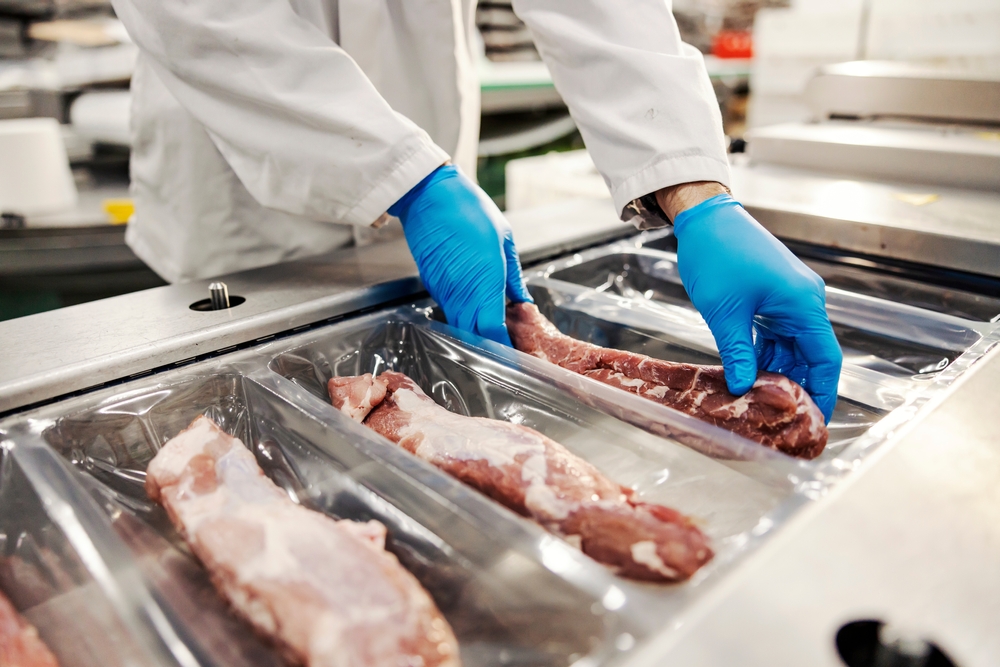
As a food company, there are critical decisions you must make from production, planning, and packaging. Selecting the right packaging for your food products influences its appeal and quality. As a food company endeavoring to deliver excellence, understanding different packaging options is crucial. This guide outlines the features and benefits of packaging options.
Modified Atmosphere Packaging (MAP)/Gas Flush
MAP and Gas Flush techniques modify the atmosphere within a package. This modification extends the shelf life and maintains product freshness. During this process, the air in the package is replaced with a controlled mix of gas. Most often, the gas is oxygen, carbon dioxide, and nitrogen. The requirements of the product dictate the composition of the gas.
MAP/Gas Flush is most suitable for perishable items. These items tend to be sensitive to oxidation and spoilage. When considering this packaging method, think of it for items like fresh-cut fruits, vegetables, meats, and dairy products. One of the benefits is it helps avert the growth of spoilage microorganisms. Ultimately, this maintains the product’s visual appeal.
Tray Sealing
During tray sealing, a preformed tray is sealed with a plastic film to create a tamper-evident and airtight package. The sealing process typically utilizes heat or pressure to create a secure closure. Tray sealing is an ideal solution for products that require prominent protection and tamper resistance. You’ll commonly find this procedure for items like ready-to-eat meals and desserts. Tray sealing provides an effective barrier against external contaminants and preserves the product’s quality.
Vacuum Skin Packaging (VSP)
Vacuum Skin Packaging (VSP) involves placing a food product on a tray and then vacuum-sealing it. Once vacuum sealed, it has a clear film wrapped tightly around it. The film conforms to the contours of the product, creating a tight seal that eliminates excess air from the package. VSP is particularly well-suited for products with irregular shapes or items that benefit from clear visibility. You’ll find this packaging method with premium cuts of meat and marinated products. VSP enhances the product’s presentation while also extending shelf life by minimizing exposure to oxygen.
What to Consider When Choosing Packaging
Different packaging methods are better suited for specific types of food products. It’s best to consider the product’s makeup and any special requirements for maintaining its freshness. When products have a shorter shelf life, MAP/Gas Flush or Vacuum Skin Packaging might be ideal to extend their freshness. Conversely, longer-lasting items may benefit from the protective barrier offered by tray sealing.
You should pay special attention to how the packaging positions itself alongside your brand’s image. You want to keep in mind that visual appeal always matters. This is true even for meal prep packaging. Choose packaging materials that are appropriate for your product and its requirements. This means you must think about recyclability and any regulatory standards.
Sustainability is gaining momentum. As a result, you should opt for packaging methods and materials that align with your commitment to environmental responsibility. Don’t overlook how difficult it is to open or reseal the package. You want packaging that is convenient for your customers. The experience they have with your product is just as important as the quality.
Rely On Roberts Technology Group For The Best Packaging Solutions
By understanding these packaging methods and their applications, you can make informed decisions. Your ultimate goal is to highlight the quality and presentation of your products. When you are determining which packaging method meets the diverse preferences of your consumers, Roberts Technology Group, Inc. As the premier leader in packing equipment manufacturing, this team is situated to help you find the perfect method to meet your needs. Contact them today to have fresher, more appealing foods reaching your customers.